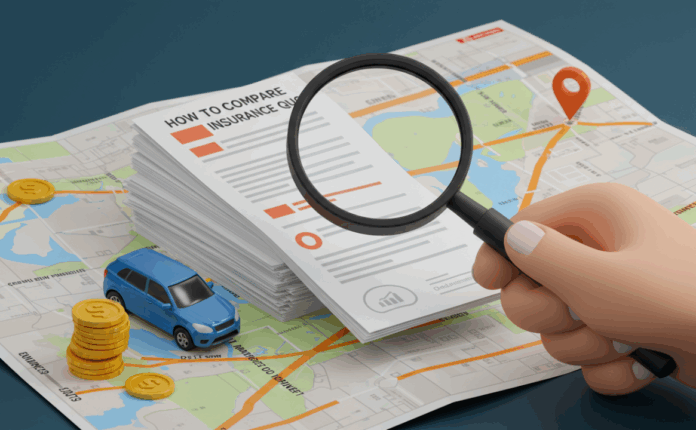Insurance often feels like a necessary evil—something you pay for but hope you’ll never need. Yet, in an unpredictable world, it acts as a financial safety net, shielding you from life’s curveballs like accidents, illnesses, or disasters. This article demystifies insurance, breaking down its essentials, helping you understand your options, and arming you with actionable steps to make smarter decisions. Whether you’re a first-time buyer or looking to optimize your coverage, here’s what you need to know to protect what matters most.
What Is Insurance and Why Does It Matter?
At its core, insurance is a contract between you and an insurer where you pay regular premiums in exchange for protection against specific risks. If a covered event occurs, the insurer compensates you for losses, up to the policy limits. Think of it as pooling resources with others: your premiums help cover someone else’s claim today, and theirs might cover yours tomorrow.
Why bother? Without insurance, a single event—like a car crash or home flood—could wipe out your savings. In the U.S., for example, medical bills from an unexpected hospital stay average over $13,000, while property damage from storms can exceed $100,000. Insurance spreads that risk, offering peace of mind and financial stability. The key is tailoring it to your life stage: young professionals might prioritize renters’ insurance, while families focus on life and health coverage.

Key Types of Insurance Explained
Insurance comes in many flavors, each designed for distinct risks. Here’s a breakdown of the most common types, with real-world examples to illustrate their value.
Auto Insurance: Protecting Your Wheels
This covers damages or liabilities from car accidents. Essentials include:
- Liability: Pays for injuries or property damage you cause others (e.g., if you rear-end someone, it covers their repairs).
- Collision and Comprehensive: Handles damage to your vehicle, whether from crashes or non-collision events like theft or hail.
- Uninsured/Underinsured Motorist: Shields you if hit by a driver without adequate coverage.
Actionable Tip: Shop around annually—rates can vary by 20-50% between providers. Use online tools to compare quotes based on your driving record and mileage.
Homeowners or Renters Insurance: Safeguarding Your Space
Homeowners policies protect your dwelling, belongings, and liability for incidents on your property. Renters versions focus on personal items and liability but not the building structure.
Key components:
- Dwelling Coverage: Rebuilds your home after a fire or storm.
- Personal Property: Replaces stolen or damaged items like furniture or electronics.
- Liability: Covers legal fees if someone sues you for an injury on your property.
Pro Tip: Inventory your belongings with photos or a spreadsheet app before renewing. This speeds up claims and ensures you’re not underinsured—aim for replacement cost, not market value.
Health Insurance: Your Medical Lifeline
This covers doctor visits, hospital stays, prescriptions, and preventive care. With rising healthcare costs, it’s non-negotiable.
Breakdown:
- Deductible: Amount you pay out-of-pocket before coverage kicks in (e.g., $1,500 annually).
- Copays/Coinsurance: Fixed fees (copays) or percentages (coinsurance) for services.
- Out-of-Pocket Maximum: Caps your yearly spending.
Insight: Open enrollment typically runs November to January. If job-based, understand your employer’s contribution— it can cover 70-80% of premiums.
Life Insurance: Securing Your Loved Ones’ Future
Pays a death benefit to beneficiaries if you pass away. Term life (fixed duration, affordable) suits most; whole life (permanent, builds cash value) is pricier but offers lifelong coverage.
How to Choose: Calculate needs using the “10-12 times annual income” rule, plus debts and future education costs. A $500,000 policy might cost $20-30/month for a healthy 30-year-old.
How to Choose and Buy the Right Insurance Policy
Selecting insurance isn’t one-size-fits-all. Follow these steps for a policy that fits your budget and needs:
- Assess Your Risks: List assets (home value, car make/model) and vulnerabilities (family dependents, high-risk hobbies like skiing).
- Set a Budget: Premiums should be 1-2% of your income for major policies. Factor in deductibles—higher ones lower premiums but raise upfront costs.
- Compare Providers: Get quotes from at least three insurers. Look beyond price: Check customer satisfaction via J.D. Power ratings and financial strength from A.M. Best.
- Read the Fine Print: Understand exclusions (e.g., floods often need separate policies) and riders (add-ons like identity theft protection).
- Buy Bundles: Combining auto and home can save 10-25%.
Red Flag to Avoid: Skipping coverage for “low-probability” events. Earthquakes seem rare until they hit—add endorsements if in prone areas.
Common Mistakes to Avoid in Insurance
Even savvy folks slip up. Here’s how to sidestep pitfalls:
- Underinsuring: Don’t skimp to save $10/month if it leaves you exposed to $50,000 losses.
- Ignoring Reviews: Auto-renew without checking—life changes like marriage or a move can alter needs.
- Overlooking Discounts: Good credit, safety courses, or smart home devices can cut rates by 5-20%.
- Delaying Claims: Report incidents within 24-48 hours to avoid denials.
By auditing your policies yearly, you ensure they’re still aligned with your evolving life.
Filing a Claim: Step-by-Step Guide
Claims can be stressful, but preparation smooths the process:
- Document Everything: Take photos, note details (date, time, witnesses), and gather receipts.
- Notify Your Insurer Promptly: Use their app or hotline—delays can void coverage.
- Submit Paperwork: Fill out forms accurately; include your policy number.
- Cooperate with Adjusters: Be honest; they assess damage fairly.
- Follow Up: Track status weekly. Average payouts take 2-6 weeks.
Pro Insight: Keep a “claim kit” handy—policy docs, emergency contacts, and a portable hard drive for evidence.
FAQ: Answering Your Top Insurance Questions
What happens if I can’t afford my premiums?
Most insurers offer payment plans or hardship extensions. Contact them early to negotiate—cancellation is a last resort and hurts your record.
How often should I review my policies?
Annually, or after major life events like buying a home, having a baby, or switching jobs.
Is insurance tax-deductible?
Health premiums often are (via employer or marketplace plans). Consult a tax pro for specifics, as rules vary.
What if my claim is denied?
Appeal in writing with evidence. If unresolved, file with your state’s insurance department—they mediate for free.
Can I switch insurers mid-policy?
Yes, but time it with renewals to avoid gaps. Prorate refunds are common for early cancellations.
Insurance isn’t exciting, but it’s empowering when done right. By understanding your options and staying proactive, you turn potential disasters into manageable hiccups. Start with a quick policy audit today—what’s one coverage you might tweak?



